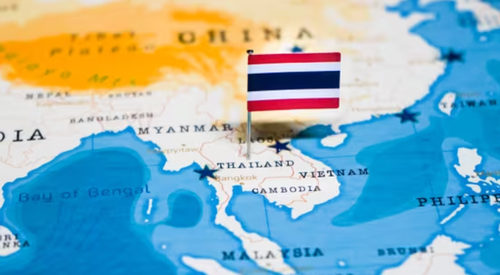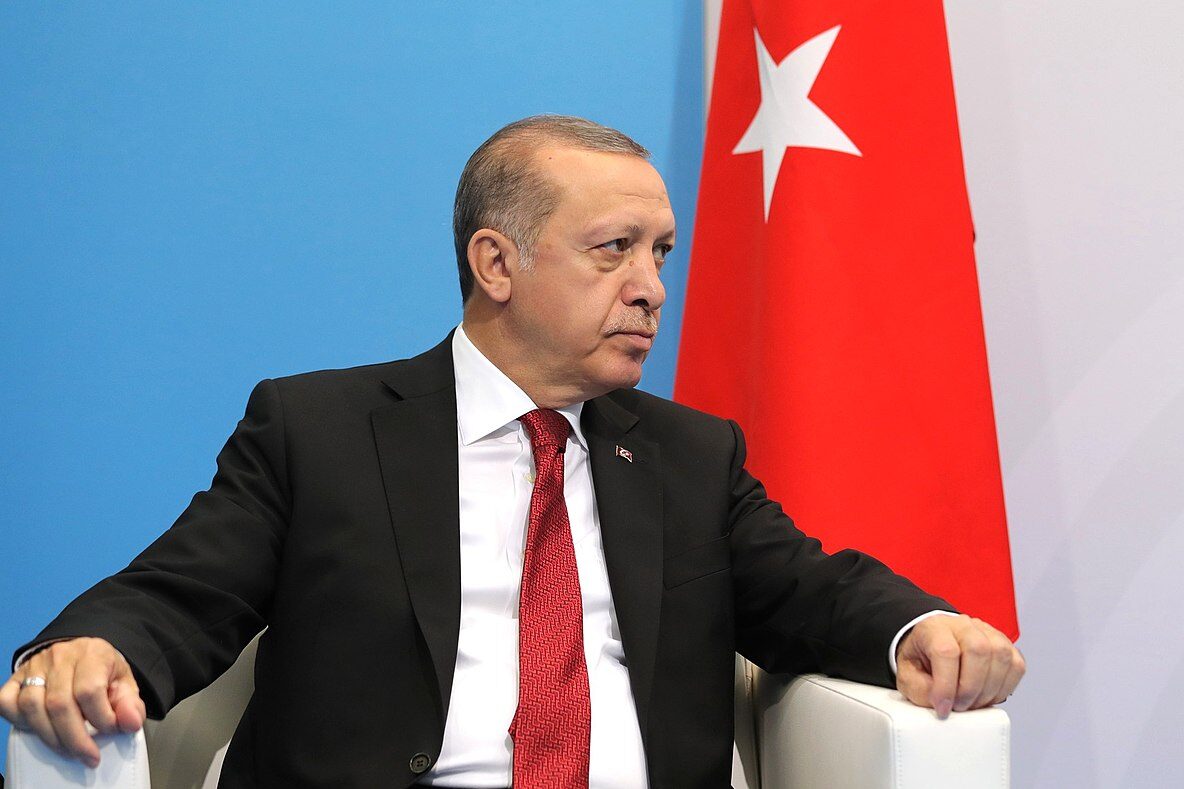
Major US Firms Demand Suppliers Embrace „China + 1” Factory Strategy
The Covid pandemic sparked a wave of global trade uncertainty, prompting US companies to reevaluate their complex supply chains centered in China by either friend-shoring, near-shoring, or re-shoring. This shift toward friend-shoring in Southeast Asia (ex-China) has positioned Thailand as a pivotal ally in Washington’s US-China decoupling strategy.
The 'America First’ economic policy directed by President Trump will focus on, most importantly, re-shoring supply chains out of China and back to the US, followed by near-shoring and friend-shoring. Trump is also set to unleash tariffs on foreign goods as the US-China decoupling gathers pace.
Focusing on friend-shoring trends, Goldman’s Allen Chang, Verena Jeng, and others hosted the „Make in Thailand Tour” last week.

During the visit to AI server liquid cooling, automotive electronics, electric vehicles, and other high-tech factories in the Southeast Asian country, Chang found a growing number of US companies are requiring suppliers to have not only Chinese factories but also a „plus one” location outside the world’s second-largest economy for diversification purposes. This has only sparked a boom in business activity in Thailand.

Chang’s first takeaway from the visit to nine factories in Thailand is that geopolitical tensions between US-China are the primary driver of business expansion:
Companies shared that US clients started to mention „China + 1” (production sites outside of China) in 2018, turned more serious in 2022 during COVID with China under lockdown, and increased focus further in 2024 during the US elections. Companies shared some of their clients have stated that they will no longer accept suppliers (for new projects) without „China + 1” by end of 2025. We see geopolitical tensions as the major reason companies are diversifying production into Thailand.
Here are the other main takeaways driving Thailand’s expansion:
-
Clusters across Southeast Asia: Companies shared there are different clusters across countries in Southeast Asia, and supply chain usually moves with clients to secure timely services. Other than the consideration of distance to the clients, there are different features across different countries as well. For example, Vietnam is closest to China supply chain and developed early; Thailand is open for foreign investment with solid infrastructure; Malaysia’s labours have higher education especially Penang where global-tier semiconductors leaders are developing the OSAT industry since 1970s.
-
AI servers, PCs, Automotive, LEO satellites are expanding in Thailand: Companies shared that three industries are showing a clear trend of supply chain expansion in Thailand: (1) AI servers supply chain: Quanta announced in Aug 2024 plans to invest US$24m; Inventec announced in late 2023 plans to invest US$152m; Auras’ investment of US$49m to US$55m for the second factory in Thailand; ZDT’s investment of US$250m; Delton’s investment of US$180m; WTT’s investment of US$75m; (2) PC supply chain: Chicony’s investment of US$45m for the phase 2; (3) LEO satellites: Compeq’s investment of US$302m; (4) Automotive: companies shared about more Chinese car OEMs expanding to Thailand, e.g. BYD, Chery, Neta, Greatwall, Geely, etc., leading to supply chain expansion.
-
Lower labour costs, but lower efficiency as well: Companies shared direct labour compensation is around 20-50% lower compared to China, or at Rmb3,000 (US$410) per month; however, for those who speak Mandarin, the costs could be double. Besides, the efficiency is one-third of Chinese labor, and thus the cost is 10-20% higher than China. To reduce costs, most companies have automated production in Thailand, and leverage government support (e.g. tax benefits, tariff benefits, etc.).
-
Hiring is not difficult: Companies shared that hiring is not difficult in Thailand, as there is also labour from countries nearby, e.g. Myanmar. Besides, the working environment is good (new air-conditioned factories) with accommodation or shuttle bus provided, making it easier to attract labour. Some companies shared they received about 90 applications for 20 labour positions.
-
Training in China: To meet US clients’ needs, most factories we visited target to start mass production by mid 2025. To secure a smooth production ramp up, most companies sent local labour to their factories in mainland China for training, and then back to Thailand. Some companies also shared they have 70% Chinese labour in their Thailand factories currently to secure a smooth trial run to production. In general, it takes 12-18 months for factory construction in Thailand (slower than China given there’s rainy season in Thailand), 6 months for equipment set up, 6 months for local labour training in mainland China, leading to mass production target by mid 2025.
-
OEM, ODM / assemblers are closer to airports and ports: We see OEMs, ODM / assemblers factories are 40-60mins drive from airports / ports, while supply chain / component makers are 2-3 hours drive away from airports / ports, but within 1 hour drive to OEMs, ODM / assemblers. Those who invested earlier in Thailand, also enjoy closer distance to airports / ports. For example, Chicony’s Thailand factory dates back to 1989; Auras invested in Thailand in 2019; PI was also early in Thailand and moved to the inner lands to enjoy more tax benefits from the local government.
-
Competition from local peers: All companies we visited didn’t seem worried about local competitors given Technology is not the focus of Thailand (i.e., less students majoring in Electrical Engineering). The government is also open to foreign investment without requirement of forming JV with local peers or cultivating local peers. However, the government strongly encourages local production. For example, the government expects car assembly and components to be produced in Thailand, but not necessarily by Thailand companies.
-
Government policies are supportive: Most companies we visited enjoy 8-year tax free, and they see a stable environment for business operations, with supportive government policies, such as BOI (Board of Investment of Thailand: up to 16 years tax free, tariff free for equipment and raw material imports, funding support for R&D centers, etc.) and EEC (Eastern Economic Corridor: tax free, tariff free for equipment and raw material imports, flexibility in foreign currency outward remittance, etc.). Infrastructure (e.g. road quality) and utilities (electricity, water supply) are also efficient, with stable labour conditions (e.g. less labour strike, disruptions etc).
-
EV market in Thailand: Companies shared that the EV penetration rate in Thailand is around 13-14% (in 2024), or 80k units, which is the largest EV market in Southeast Asia, and the penetration rate could further go up in 2025-26E. The major EV brands in Thailand are all from China, with BYD enjoying 30%+ market share in Thailand’s EV market, followed by Neta at 20%, and other major brands including Changan, SAIC, etc. Companies shared China remains the strongest market for EV, considering the infrastructure (e.g. charging stations) in Thailand is not yet as comprehensive as China.
Major restructuring of supply chains has been underway since Trump’s first term as re-shoring, near-shoring, and friend-shoring trends will go into hyper-drive under Trump’s second term.
In a separate note, Goldman Chief Economist Jan Hatzius, alongside Alec Phillips, David Mericle, and others, commented on Trump’s day one of office on Monday, calling the president’s tariff reveal „more benign than expected.” This was mainly because Trump did not comment on China’s tariff policy while negotiations appeared ongoing with Chinese President Xi Jinping. However, Trump directed his trade efforts toward Canada and Mexico, threatening a 25% on both countries by February.
As for Thailand, it has become an integral part of the US friend-shoring strategy. The big takeaway comes from the Goldman note on US companies demanding suppliers have a plus one factory outside of China, providing tailwinds for Thailand.
Meanwhile, economic tailwinds have likely produced the next yachting boom for the wealthy residents of Thailand.
Tyler Durden
Tue, 01/21/2025 – 19:30















